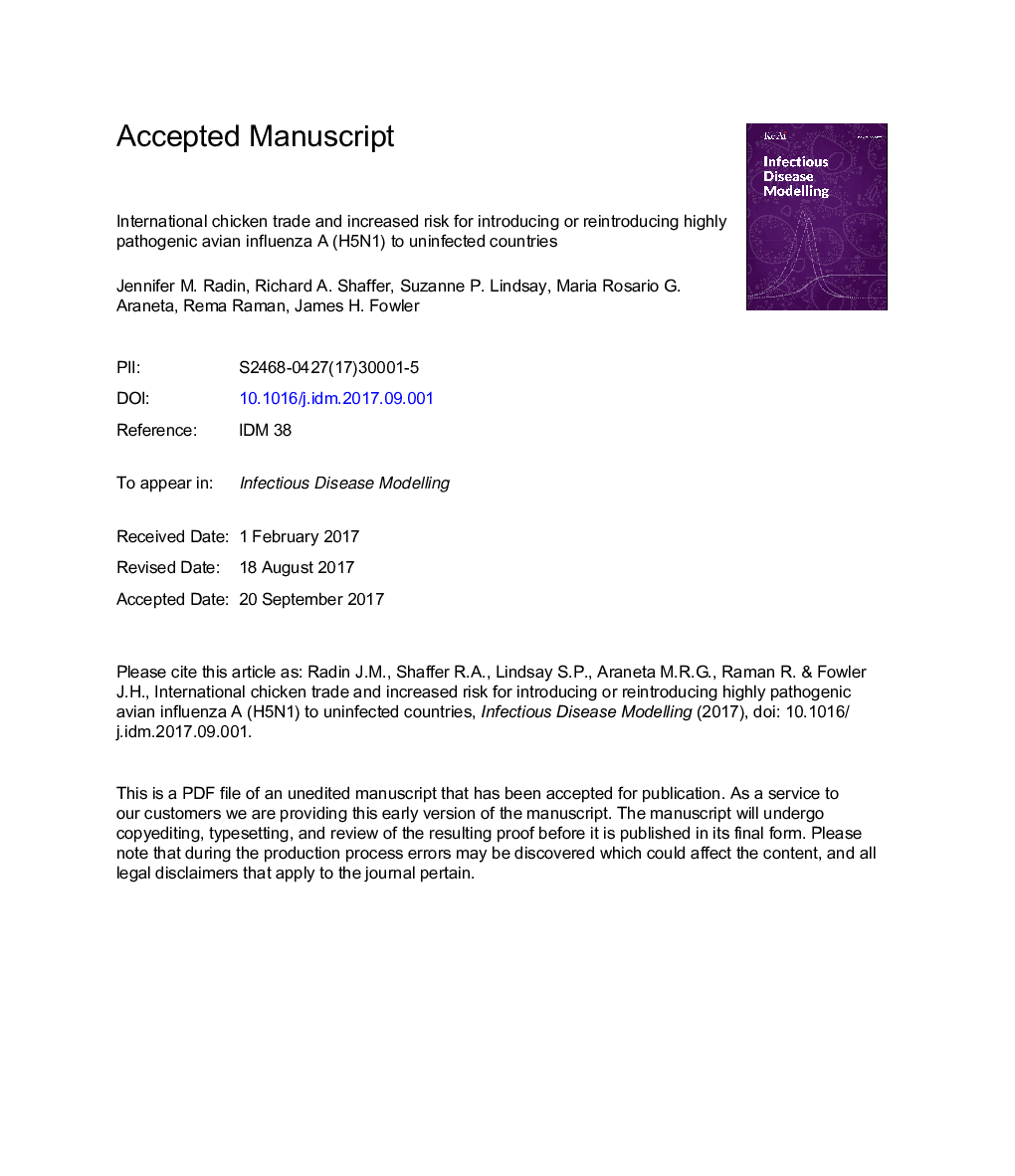| Article ID | Journal | Published Year | Pages | File Type |
|---|---|---|---|---|
| 8733282 | Infectious Disease Modelling | 2017 | 22 Pages |
Abstract
Every year billions of chickens are shipped thousands of miles around the globe in order to meet the ever increasing demands for this cheap and nutritious protein source. Unfortunately, transporting chickens internationally can also increase the chance for introducing zoonotic viruses, such as highly pathogenic avian influenza A (H5N1) to new countries. Our study used a retrospective analysis of poultry trading data from 2003 through 2011 to assess the risk of H5N1 poultry infection in an importing country. We found that the risk of infection in an importing country increased by a factor of 1.3 (95% CI: 1.1-1.5) for every 10-fold increase in live chickens imported from countries experiencing at least one H5N1 poultry case during that year. These results suggest that the risk in a particular country can be significantly reduced if imports from countries experiencing an outbreak are decreased during the year of infection or if biosecurity measures such as screening, vaccination, and infection control practices are increased. These findings show that limiting trade of live chickens or increasing infection control practices during contagious periods may be an important step in reducing the spread of H5N1 and other emerging avian influenza viruses.
Keywords
Related Topics
Health Sciences
Medicine and Dentistry
Health Informatics
Authors
Jennifer M. Radin, Richard A. Shaffer, Suzanne P. Lindsay, Maria Rosario G. Araneta, Rema Raman, James H. Fowler,
